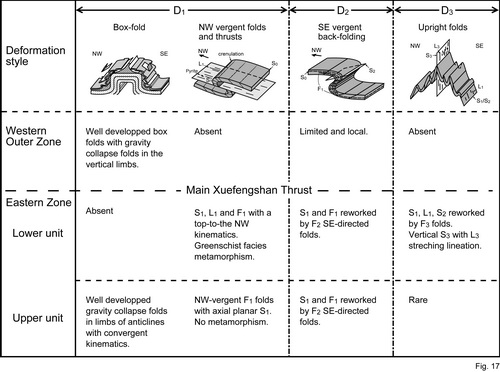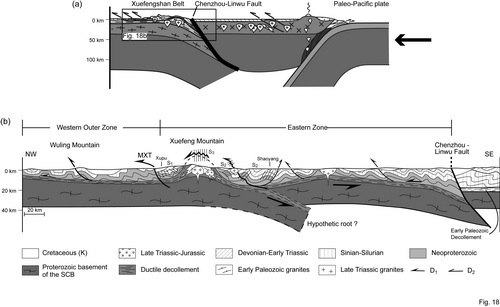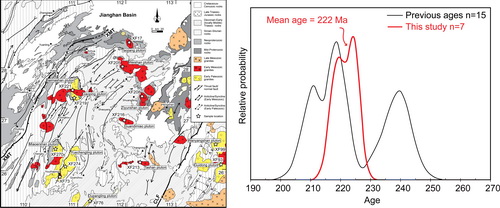Early Mesozoic tectonics of the South China blockUpdate time:01 28, 2013
Postdoctor CHU Yang and his teacher LIN Wei present new detailed structural data and chronological constraints of the Xuefengshan Belt, South China block. They aim to improve their understanding of the tectonic evolution of the central part of the South China block, and may provide general insights into the development of intracontinental belts. They infer that the central area of the South China block has experienced two tectonothermal events: the Early Paleozoic magmatism developed as a result of the collapse of the Early Paleozoic orogen, while these Early Mesozoic granites can be the late-orogenic products of the intracontinental Xuefengshan orogen, most likely manifesting the far field effect by the subduction of the Paleo-Pacific ocean plate at the southeastern margin of the South China block. The Xuefengshan Belt is interpreted as an Early Mesozoic intracontinental orogen, which possibly originated from the SE-directed continental subduction of a piece of the South China block in response to northwestwards subduction of the Pacific plate.
Fig. 1 Multi-stage tectonic deformation of Xuefengshan belt. (Image by CHU)
Fig. 2 General tectonic model of the South China block in the Early Mesozoic. (Image by CHU)
Fig. 3 Geologic map of the Xuefengshan Belt with sample locations of granites and Relative probability plots of isotopic ages of Triassic granites. (Image by CHU) Chu et al. Early Mesozoic tectonics of the South China block: Insights from the Xuefengshan intracontinental orogen. Journal of Asian Earth Sciences.2012, 61: 199-220 (Download Here) Chu et al. Tectonics of the Middle Triassic intracontinental Xuefengshan Belt, South China: new insights from structural and chronological constraints on the basal décollement zone. International Journal of Earth Sciences.2012, 101: 2125-2150 (Download Here) Chu et al. Phanerozoic tectonothermal events of the Xuefengshan Belt, central South China: Implications from U-Pb age and Lu-Hf determinations of granites. Lithos.2012, 150: 243-255 (Download Here)
|
Contact
Related Articles
Reference
|
-
SIMSSecondary Ion Mass Spectrometer Laboratory
-
MC-ICPMSMultiple-collector ICPMS Laboratory
-
EM & TEMElectron Microprobe and Transmission Electron Microscope Laboratory
-
SISolid Isotope Laboratory
-
StIStable Isotope Laboratory
-
RMPARock-Mineral Preparation and Analysis
-
AAH40Ar/39Ar & (U-Th)/He Laboratory
-
EMLElectron Microscopy Laboratory
-
USCLUranium Series Chronology Laboratory
-
SASeismic Array Laboratory
-
SEELaboratory of Space Environment Exploration Laboratory
-
PGPaleomagnetism and Geochronology Laboratory
-
BioMNSFrance-China Bio-mineralization and Nano-structure Laboratory

 Print
Print Close
Close


